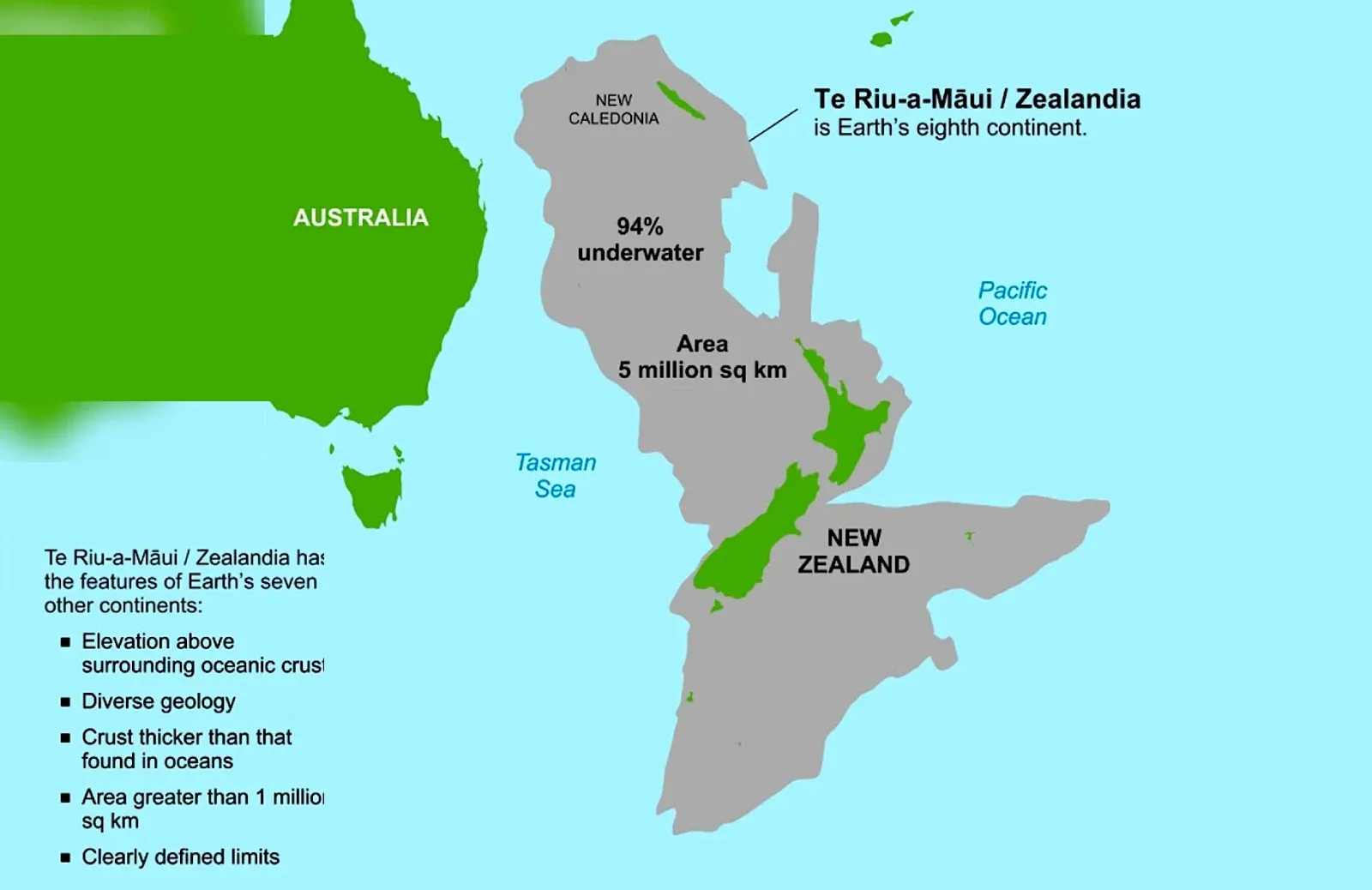Earth's Hidden Eighth Continent Is No Longer Lost
Lost Continent of Zealandia Revealed in Detailed New Map
Zealandia, considered the Earth’s eighth continent, was mostly lost to the sea. Geologists say they’ve now mapped the entire nearly two million square miles of the underwater land mass.
A small international team of geologists and seismologists has created a newly refined map of Zealandia using data obtained from dredged rock samples recovered from the ocean floor. They report details in the journal Tectonics.
Prior research has suggested that approximately 83 million years ago, the supercontinent Gondwana was pulled apart by geological forces, resulting in the beginnings of the continents that exist today. It also resulted in the creation of another continent that is now submerged. That continent, called Zealandia, is believed to be approximately 94% under the sea—the remaining 6% make up New Zealand and surrounding islands.
Because it is submerged beneath the ocean, Zealandia is not nearly as well studied as the conventional continents, resulting in inconsistencies in its presumed form and structure. In this new effort, the research team sought to refine existing maps of Zealandia by studying collections of rocks and sediment samples brought up from the ocean bed, most of which came from drilling sites—others came from the shores of islands in the area.
 |
| A map of Zealandia. Photo by: GNS Science |
The team then studied the samples as part of a secondary study that involved analyzing seismic data for the region. They then created a more refined map of the whole 5 Mkm2 Zealandia continent.
Study of the rock samples showed geologic patterns in West Antarctica that hinted at the possibility of a subduction zone near the Campbell Plateau off the west coast of New Zealand. The researchers did not find magnetic anomalies in that area, however, which argues against theories surrounding a strike-slip in the Campbell Fault.
They suggest instead that the Campbell Magnetic Anomaly System resulted from stretching of Gondwana as it was being torn apart. That stretching, they further propose, eventually led to a break, which resulted in the creation of ocean floor that makes up the lower parts of the Zealandia continent.
The newly refined map shows not only the location of the magmatic arc axis of the Zealandia continent but other major geological features as well.
An analysis of their chemical makeup, along with other geological clues, revealed similarities in patterns with geology in West Antarctica, suggesting a subduction of Zealandia's edge up to a quarter of a billion years ago, across what's now the Campbell Plateau off New Zealand's west coast.
Subduction is when two edges of Earth's crust push against one another forcing one edge down into Earth's mantle. But contrary to previous suggestions, magnetic anomalies found in the same region are not related to this event.
This removes "the original argument for a strike‐slip "Campbell Fault," Tulloch and team explain in their paper. "Zealandia and Antarctica are both substantially internally deformed."
Instead, they propose, the Campbell Magnetic Anomaly System arose from extensive stretching between different parts of Gondwana that eventually snapped apart to create Zealandia's surrounding sea floors.
First the combined areas of Zealandia/West Antarctica and Antarctica/Australia cracked, allowing the Tasman sea to rush in about 83 million years ago.
Next, during the Late Cretaceous around 79 million years ago, Zealandia and West Antarctica ripped away creating the Pacific ocean.
How Zealandia's crust managed to stretch so thin before breaking away, has long puzzled geologists. Similar thinness is also apparent in West Antarctica.
Tulloch and colleagues found evidence that the stretching direction varied by up to 65 degrees between 100 to 80 million years ago. They think this may have allowed the extensive thinning of the continental crust.
Together these findings create a solid foundation for a more detailed analysis for this strange stretching of the earth.
The above story is based on Materials provided by GNS Science.








